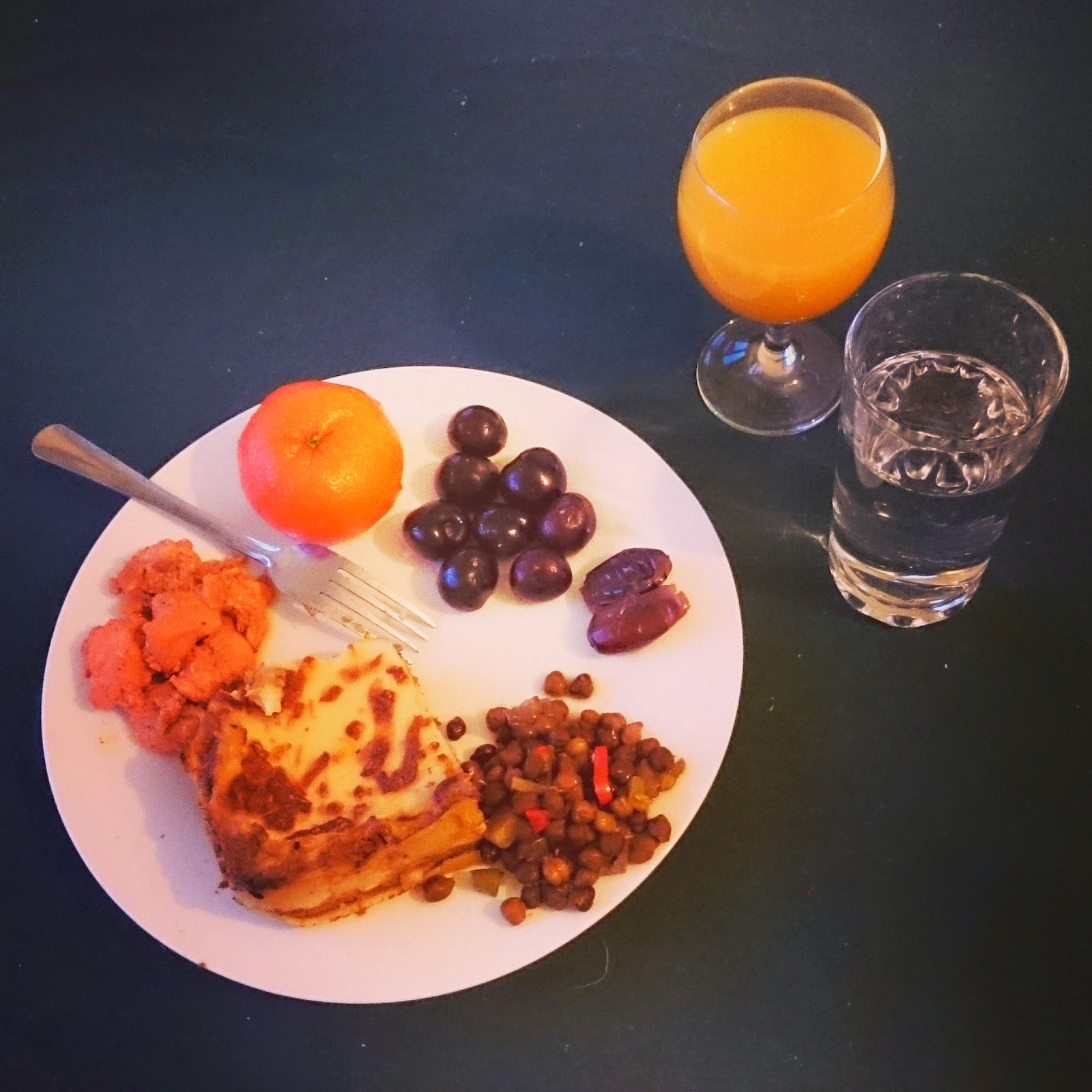ছোলা ভাজা
Chickpeas
 |
| My first batch of chickpeas this year |
It's that time of year again. Fasting while growing up was always exciting. Getting up for seheri after midnight felt like a bit of an adventure, especially if I was in Bangladesh with the extended family (read: cousins my age). There was also an element of competition with said cousins - and yes, I do know this isn't the point of Ramadan. But all of this gave Ramadan an extremely festive mood, and made for a great feeling when coupled with the charitable spirit that permeated the air during this time.
What really cemented this feeling for me was the food. In Bangladesh, this is when restaurants and other establishments retract their normal menus in favour of Ramadan staples: kebabs, various vegetable fritters, haleem, chaap and so on. Opening times change to match iftaar and seheri times, and footfall into food halls and open markets often starts early afternoon and continues into the early hours of the morning. These flipped-around living patterns, queuing for elusive Ramadan-only food makes for a very unique experience.
But food for Ramadan doesn't always need to be bought. Certain staples, like chickpeas, have always been home-cooked in our family. Chickpeas form the bulk of our family's iftaars, substituting carbs for a month. This makes them a somewhat immutable part of Ramadan for me and as such the perfect first recipe to share. At iftaars, we serve this with vegetable fritters, a garnish of salad, fruits and dates to form a full meal. If you're not having this for Ramadan, it can also be served as a snack or a side dish as part of a larger menu.
Ingredients:
- 200.00 g of dried black chickpeas
- 0.50 teaspoon of turmeric
- 1.00 teaspoon of ginger paste
- 1 small potato
- Half a small onion
- Chillies, to taste
- Salt, to taste
Method:
- Soak the chickpeas in water overnight or at least 6 hours
On the left, dry chickpeas. On the right,
chickpeas after they've soaked for a few hours
- Boil now engorged chickpeas just submerged in water for an hour or until a single chickpea crushes smoothly when pressed with a teaspoon
- Add salt to taste to the chickpeas while boiling - the thick skin means you need to add the salt early so that it permeates through
- Add more boiling water to the pot if the chickpeas dry out too quickly before they've cooked and gone soft
- Once the chickpeas are cooked, drain some of the remaining water if the chickpeas are still submerged - the water that remains is what's going to form the sauce for the dish so adjust this to your tastes
- Add the ginger and turmeric, and continue boiling on low heat for approximately 10 minutes
 |
| This is what you don't do! Drain excess water before you add the turmeric and ginger! |
- Slice the potato into small pieces and add to the chickpeas
- While chickpeas and potato are cooking, slice the onion and fry until it goes soft and translucent
- Add the chillies to the pan, and continue frying until the edges of the onion start to brown
 |
| Mixing up red and green chillies adds a little colour to this dish |
- Check if the potatoes are cooked through, and if necessary add small amounts of boiling water to the pot so the dish doesn't dry out
- Once the potatoes are done, add the browned onion and chilli and continue cooking for about 10 minutes
 |
| Almost done here, just waiting for the dish to dry a little as that's how I prefer it |
- Take off the heat and serve with a garnish or side salad - see more in the Additional Info section below
 |
| From my Instagram feed. Chickpeas are normally served as one part of an iftaar meal. |
Additional Info:
The garnish or side salad that goes with chickpeas in Bangladesh varies greatly. I personally add diced tomato, onion and coriander, along with a little bit of fresh chilli and lemon juice. The amount of each I add changes with my mood, but I usually go easy on the coriander and chilli. My parents like to add puffed rice, and while I'm not a big fan of this it does bulk out the dish somewhat.


No comments:
Post a Comment